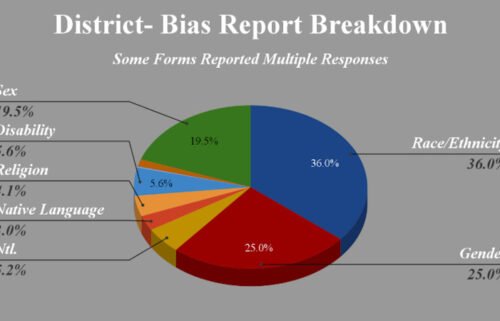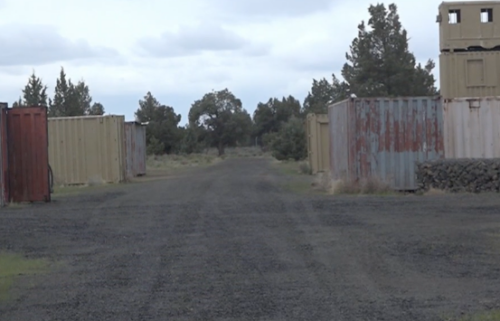‘Frustration’ as Crook, Jefferson counties fall back into COVID-19 ‘High Risk’; Deschutes avoids ‘Extreme Risk’
(Update: Adding video, comments from Crook County official, business)
PRINEVILLE, Ore. (KTVZ) — Gov. Kate Brown on Tuesday announced updates to county risk levels under the state's public health framework to reduce transmission and protect Oregonians from COVID-19, and that put 10 counties, including Crook and Jefferson, back at the "High Risk" level, due to worsening case numbers.
The framework uses four different risk levels for counties based on COVID-19 spread—Extreme Risk, High Risk, Moderate Risk, and Lower Risk—and assigns health and safety measures for each level.
Effective Friday through May 6, there will be 23 counties in the High Risk level, three at Moderate Risk, and 10 at Lower Risk. As case counts and hospitalizations increase and counties qualify for higher risk levels, increased safety measures for businesses and activities will resume.
The 10 counties moved to the High Risk category are: Baker, Clatsop, Columbia, Crook, Jefferson, Lane, Polk, Wasco, Washington and Yamhill.
A complete list of counties and their associated risk levels is available here.
“As we face more contagious variants and increased spread of COVID-19 in our communities, the best way to protect yourself and others is to get vaccinated," Brown said. "Until you, your family, your friends, and your neighbors are fully vaccinated, it's also critical that we all continue to wear masks, maintain physical distance, and stay home when sick.”
Crook County public health officials say it's hard for businesses to transition from the Low Risk category for COVID-19 back into high risk.
"Our businesses have been open at the lower category for four weeks, and they've just been getting ramped up and enjoying business again -- so there has been some frustration," Vicky Ryan, emergency preparedness coordinator for Crook County Public Health, said Tuesday.
Local businesses will feel the weight of this change.
The manager of Neat Repeat, a thrift store that supports the Prineville Senior Center, says they can't shut down.
"We can't afford to be shut down. This is what supports our Senior Center. We've got to keep it going -- the Meals on Wheels has got to keep going," Peg McCutchen said.
There were 59 reported cases of COVID-19 in Crook County over the past two weeks. Social gatherings from spring break, Easter and even nice weather are believed to be the biggest reasons for why these numbers are rising.
Ryan says they're optimistic about returning to Moderate or Low Risk.
"We're hoping that for the following two week cycle we can move down to moderate or lower," she said. "Because of the holidays, because of the family gatherings, the change in weather brings people out and together more -- we're hopeful."
Ryan says only 30% of Crook County residents are in the process of or have received the COVID-19 vaccine.
Statewide hospitalization metrics for determining Extreme Risk
For counties to move to (or remain in) Extreme Risk, they must meet the county metrics for case rates and percent positivity, plus statewide hospitalization metrics: COVID-19 positive patients occupying 300 hospital beds or more, and a 15% increase in the seven-day hospitalization average over the past week. This week, there are 11 counties that qualify for Extreme Risk, based on their county metrics, but are assigned High Risk because the statewide hospitalization triggers have not been met: Baker, Clackamas, Columbia, Crook, Deschutes, Jackson, Josephine, Klamath, Linn, Marion, and Polk.
Three counties enter two-week caution period
The two-week caution period applies to counties facing backward movement. Counties that reduced their COVID-19 spread enough to move down in risk level in the previous two-week period, but see their numbers go back up in the next two-week period, are given a two-week caution period to re-focus efforts to drive back down creeping case numbers and give local businesses additional certainty on their plans for operating. This week, the caution period applies to three counties:
- Grant County qualifies for High Risk but is given a two-week caution period at Lower Risk because it moved down from Moderate Risk in the last movement period.
- Malheur County qualifies for Moderate Risk but is given a two-week caution period at Lower Risk because it moved down from Moderate Risk in the last movement period.
- Umatilla County qualifies for High Risk but is given a two-week caution period at Moderate Risk because it moved down from High Risk in the last movement period.
The Oregon Health Authority will examine and publish county data weekly. County risk levels will be reassigned every two weeks. The first week's data will provide a "warning week" to prepare counties for potential risk level changes. The next assignment of risk levels will be announced May 4 and take effect May 7.
Updates to Warning Week data and county risk levels will be posted to coronavirus.oregon.gov.



